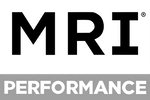Why Your Pumps Suck: Signs Your Pre-Workout Isn’t Actually Working
Posted by Medical Research Institute on 9th May 2025
You're halfway through your workout, veins barely showing, arms feeling soft, and you're wondering what went wrong. You chugged your pre-workout, you lifted heavy, but the pump? Weak. Flat. Practically non-existent. And if you've ever walked out of the gym without that tight, skin-stretching swell, you know exactly how demotivating it can feel.
So here's the truth: your pre-workout might be trash. Or, at the very least, it's not doing what it should.
Let's break down what a good pump actually is, how to tell when your pre-workout isn't cutting it, and what ingredients actually work, no more wasting time (or scoops) on weak formulas.
What's a “Real” Pump Supposed to Feel Like?
When your pre-workout is doing its job, a good pump feels like this:
- Muscles feel full, hard, and tight, especially during and after your working sets
- Veins pop, even in areas that don't normally show vascularity
- You feel more connected to your lifts, like you're dialed into every rep
- Volume increases naturally, because your muscles are being flooded with nutrient-rich blood and oxygen
If you're finishing your workout feeling deflated instead of inflated, there's a good chance your pre-workout formula isn't optimized for nitric oxide production.
Red Flags: Signs Your Pre-Workout Isn't Actually Working
1. Zero Pump, Even on Volume Days
If you're crushing 3-4 sets of 10+ reps and still looking flat in the mirror, something's wrong. High-rep training should light up your pump, especially if your nitric oxide pathways are supported. No swelling = no blood flow.
2. Stimulant Overload, No Muscle Response
Many mainstream pre-workouts mask poor pump performance with truckloads of caffeine. Sure, you're jittery and maybe even shaking, but your muscles aren't responding. That's because energy ≠ pump. You need vasodilation, not just stimulation.
3. No Increase in Vascularity
If your forearms, biceps, and delts look the same after your session as they did before it, it's likely your NO2 pathways aren't firing properly. Vascularity is a visual indicator that your blood vessels are expanding and delivering nutrients.
4. Ingredients You Can't Pronounce-and Doses You Can't Find
If the label is one giant proprietary blend with vague ingredient names and no dosages listed, you're flying blind. You don't want “pump matrix blend”, you want specific ingredients at proven doses.
The Best Pre-Workout Ingredients for Muscle Pumps
You don't need a mystery mix of 20 ingredients. You need clinically backed NO2 boosters that do what they say. Here are the all-stars:
1. Nitrosigine®
A patented complex of arginine and silicon that significantly increases nitric oxide levels, blood flow, and vascularity. Bonus: it also enhances mental focus.
Effective Dose: ~1.0g
2. Citrulline (especially Citrulline Malate)
Citrulline converts into arginine more effectively than arginine itself, which then boosts nitric oxide. It also buffers ammonia for better endurance.
Effective Dose: 4-5g of Citrulline Malate
3. S7™
A blend of plant-based compounds shown to increase nitric oxide levels by 230% in clinical studies. Think of it as a natural amplifier.
Effective Dose: 50-100mg
4. Hydromax® (Glycerol)
Supports muscle fullness by drawing water into the muscle cells, giving you that round, hard look.
Effective Dose: 1-2g
Citrulline vs. Arginine: Which Is Better for Pumps?
Short answer: Citrulline wins.
Long answer: While arginine is the direct precursor to nitric oxide, it gets broken down too quickly in the gut to be very effective on its own. Citrulline bypasses that issue, converting into arginine in the kidneys, which then boosts NO2 more efficiently.
That said, Nitrosigine®, a stabilized form of arginine bound to silicon, gets around this problem and performs well in clinical studies. If your formula uses plain old L-arginine? You're better off without it.
How to Upgrade Your Pre-Workout Game
- Check the label for Nitrosigine®, Citrulline, S7™, and Hydromax®. No fluff, no fillers, and definitely no mystery blends.
- Skip the stim bombs unless you're chasing a caffeine high. A real pump doesn't need 400mg of caffeine to perform.
- Hydrate like a pro. NO2 boosters need water to work. Creatine and glycerol especially depend on it. Don't shortchange your hydration game.
- Time your dose 30-45 minutes before training. This gives the nitric oxide pathway time to activate before your first working set.
The Real Reason Most Pre-Workouts Fail
It's not your body. It's your formula.
Most pre-workouts either overdo the stimulants, underdose the real pump agents, or skip nitric oxide support entirely. If your pre leaves you feeling wired but not swollen, it's just not doing the job.
A real pre-workout should light you up mentally and physically, with clean energy, full muscle volume, and skin-splitting vascularity that screams “I showed up to lift.”
Bottom Line: Don't Settle for Weak Pumps
If you're serious about growth, performance, and feeling like a monster in the gym, your pre-workout should deliver more than a buzz. You want science-backed blood flow, real ingredients, and visible results, not false hype and empty scoops.
That's why lifters who know what's up turn to NO2 Black Muscle + Pump from MRI Performance. It's packed with Nitrosigine®, S7™, Citrulline, and Hydromax®, all at clinically supported doses. No underdosing, no fillers, just the pump you've been chasing.

